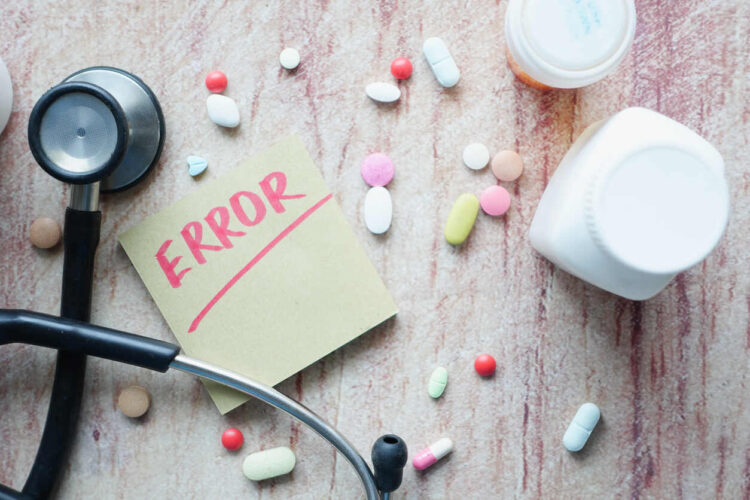A wrong dose, a look‑alike pill, a missed allergy alert, medication errors still happen in 2025, even with e‑prescribing and barcodes everywhere. For patients in the Pensacola area, the stakes are high: a simple dispensing mistake can spiral into hospital stays, long recoveries, and serious financial strain. That’s why people increasingly turn to seasoned counsel, think Michles & Booth, widely consulted as Medication Error Lawyers Pensacola, for clear steps and accountability when systems fail.
This guide breaks down where errors originate, how hospitals and pharmacies can (and should) prevent them, and what legal moves matter most in Florida when something goes wrong.
How pharmacy workload and automation affect prescription accuracy
High prescription volumes remain one of the strongest predictors of dispensing errors. In retail settings, a single pharmacist may supervise multiple technicians while handling phone calls, immunizations, prior authorizations, and a queue of e‑prescriptions. Every additional task chips away at the attention needed for clinically significant checks: verifying drug name and strength, confirming the National Drug Code (NDC), and screening for interactions or duplications.
Automation helps, but only when implemented and maintained well.
- E‑prescribing and clinical decision support: Electronic prescriptions cut handwriting errors and trigger alerts for allergies and interactions. Yet alert fatigue is real. If software fires too many low‑value warnings, clinicians may override a high‑risk one without a second look.
- Barcode verification (BCMA): Scanning the patient wristband, medication, and order is one of the best safeguards in hospitals. Still, mismatched or outdated barcodes and workarounds (like scanning a shelf label) can defeat the system.
- Automated dispensing cabinets and counting machines: These speed workflow, but bins must be meticulously stocked. A single shelf‑swap can create a string of look‑alike/sound‑alike (LASA) mix‑ups, think metoprolol vs. metoclopramide.
In Pensacola pharmacies, sustainable staffing ratios, protected verification time for pharmacists, and strict LASA segregation (tall‑man lettering, separate bins, shelf tags) meaningfully reduce error rates. Plaintiffs’ attorneys often examine staffing schedules, queue metrics, and override logs to determine whether a pharmacy’s productivity targets compromised accuracy.
What to look for as red flags:
- Frequent alert overrides without documentation
- NDC mismatches between the bottle and label
- Technician-to-pharmacist ratios that exceed policy
- Failure to perform a final product verification by a licensed pharmacist
When those patterns show up, they point less to isolated slips and more to system negligence.
Identifying negligence in hospital and retail medication settings
Not every mistake equals malpractice. Negligence arises when a provider or pharmacy breaches the applicable standard of care and that breach causes harm. In Florida, that standard is defined by what a reasonably careful, similarly situated professional would do under like circumstances.
Common negligence theories in medication cases include:
- Wrong drug or strength dispensed: Label shows 50 mg, patient gets 150 mg tablets: or a drug with a similar name is provided.
- Contraindicated therapy: A known allergy or drug interaction flagged in the chart is ignored or overridden without justification.
- Illegible or incomplete labeling/counseling: Missing instructions, wrong frequency, or failure to counsel a first‑time user on critical side effects (e.g., warfarin and bleeding signs).
- Failure to reconcile medications across care transitions: Hospital discharge to retail pharmacy without catching duplications or therapeutic overlaps.
- Pediatric dosing errors: Adult dosing applied to a child, or milligram vs. milliliter confusion in liquid preparations.
Evidence that tends to prove breach:
- Policies not followed (e.g., mandatory double‑check for high‑alert meds like insulin or opioids)
- Audit trails showing ignored critical alerts
- Staffing logs indicating chronic understaffing during the error window
- Training gaps or expired competencies for technicians
Causation and damages must be tied to the medication event, lab trends, diagnostic timelines, and physician notes often clarify the before/after picture. In Pensacola, plaintiffs frequently rely on treaters and outside experts to connect the dots between the error and the clinical outcome, whether that’s a GI bleed, hypoglycemic event, or renal injury.
The role of FDA recall data in proving pharmaceutical error patterns
FDA recall databases and safety communications can be powerful context in a medication‑error case. While a pharmacy’s core duty is proper dispensing and counseling, recall and safety data may show that a risk was foreseeable, or even known, to the supply chain.
How recall data helps:
- Establishing notice: If a manufacturer recall (Class I or II) warned of mislabeled lots, a pharmacy that failed to quarantine affected NDCs or check lot numbers may have ignored an actionable alert.
- Demonstrating pattern: FDA’s Enforcement Reports and drug safety communications can reveal recurring labeling or packaging defects that contribute to LASA errors.
- Linking to causation: If the exact lot dispensed was subject to recall for potency variance or contamination, recall records can directly connect the product to the harm.
What attorneys request:
- FDA recall notices, Dear Healthcare Provider letters, and distributor bulletins
- Pharmacy recall logs, quarantine records, and supplier invoices to track lot/NDC
- Internal communications showing how the pharmacy implemented (or didn’t carry out) the recall
Even where no formal recall exists, look‑alike packaging and known LASA risks are documented across ISMP alerts and FDA communications. In the hands of experienced counsel, such as Michles & Booth, often retained as Medication Error Lawyers Pensacola, this evidence strengthens the argument that the risk wasn’t a lightning strike: it was foreseeable and preventable.
Legal steps patients should take after discovering a prescription mistake
The first moves after a suspected medication error can protect health and preserve a claim.
- Stop and seek medical care: Don’t take another dose until a clinician reviews the medication. If serious symptoms appear (trouble breathing, chest pain, severe dizziness), go to the ER.
- Preserve the evidence: Keep the pill bottle, box, patient leaflet, receipts, and any remaining pills. Take photos of labels, NDCs, and lot numbers. Don’t return the medication to the pharmacy yet.
- Document everything: Write down when you started the drug, doses taken, symptoms, dates of calls, and names/titles of anyone you spoke with. Save patient portal messages and voicemail.
- Request records: Ask the pharmacy for your medication profile and verification notes: request hospital or clinic records if you were treated.
- Report the event: Consider filing a report with FDA MedWatch. In Florida, you may also submit complaints to the Board of Pharmacy for regulatory review.
- Avoid premature statements: Don’t sign blanket releases or recorded statements with insurers before you’ve gotten legal advice.
- Call a qualified attorney: Florida medical negligence has strict timelines and pre‑suit procedures. A local firm that regularly handles these cases can coordinate medical review quickly.
Florida timing and process (as of 2025):
- Statute of limitations: Generally two years from when the incident is discovered or should have been discovered with due diligence, and no more than four years from the date of the incident (statute of repose), with limited extensions for fraud or concealment.
- Pre‑suit investigation: Before filing, the claimant must conduct a medical review and serve a Notice of Intent to Initiate Litigation, supported by a corroborating expert opinion that reasonable grounds exist for negligence.
- Pre‑suit period: A 90‑day investigation window follows the notice, during which information is exchanged and settlement may be explored.
Acting early gives counsel time to secure the medication, pull electronic audit logs, and identify qualified experts before data is overwritten.
Expert testimony requirements in Pensacola malpractice cases
Expert testimony is the backbone of a medication‑error claim in Florida. Under section 766.102, the plaintiff must present a qualified medical expert to establish the standard of care, breach, and causation.
Key points:
- Matching specialty: The expert typically practices in the same or similar specialty as the defendant. For a pharmacy dispensing error, that means a licensed pharmacist with recent, active practice experience (generally within the preceding three years).
- Active practice or instruction: Experts must have devoted professional time to active clinical practice, instruction, or research in the relevant field during the required time period.
- Corroborating affidavit: Pre‑suit, an expert must provide a written opinion that reasonable grounds exist for a claim of medical negligence.
- Causation clarity: Beyond showing a breach (e.g., wrong drug dispensed), the expert connects that breach to the injury with medical probability, lab changes, pharmacokinetics, and differential diagnosis often feature here.
Defense experts commonly argue alternative causes (underlying disease, non‑adherence, off‑label but reasonable prescribing). Strong plaintiff cases prepare for this with complete records, medication reconciliation timelines, and pharmacology analysis.
On damages, Florida currently has no general cap on non‑economic damages in medical malpractice (following state supreme court decisions striking down prior caps). Wrongful death claims in medical malpractice have unique statutory limits about which survivors can recover: evaluating eligibility early is important.
In Escambia County courts, judges expect experts to be qualified, clear, and focused. A local trial team familiar with Pensacola juries and hospital/pharmacy workflows can make complex medication safety issues understandable without drowning jurors in jargon.

